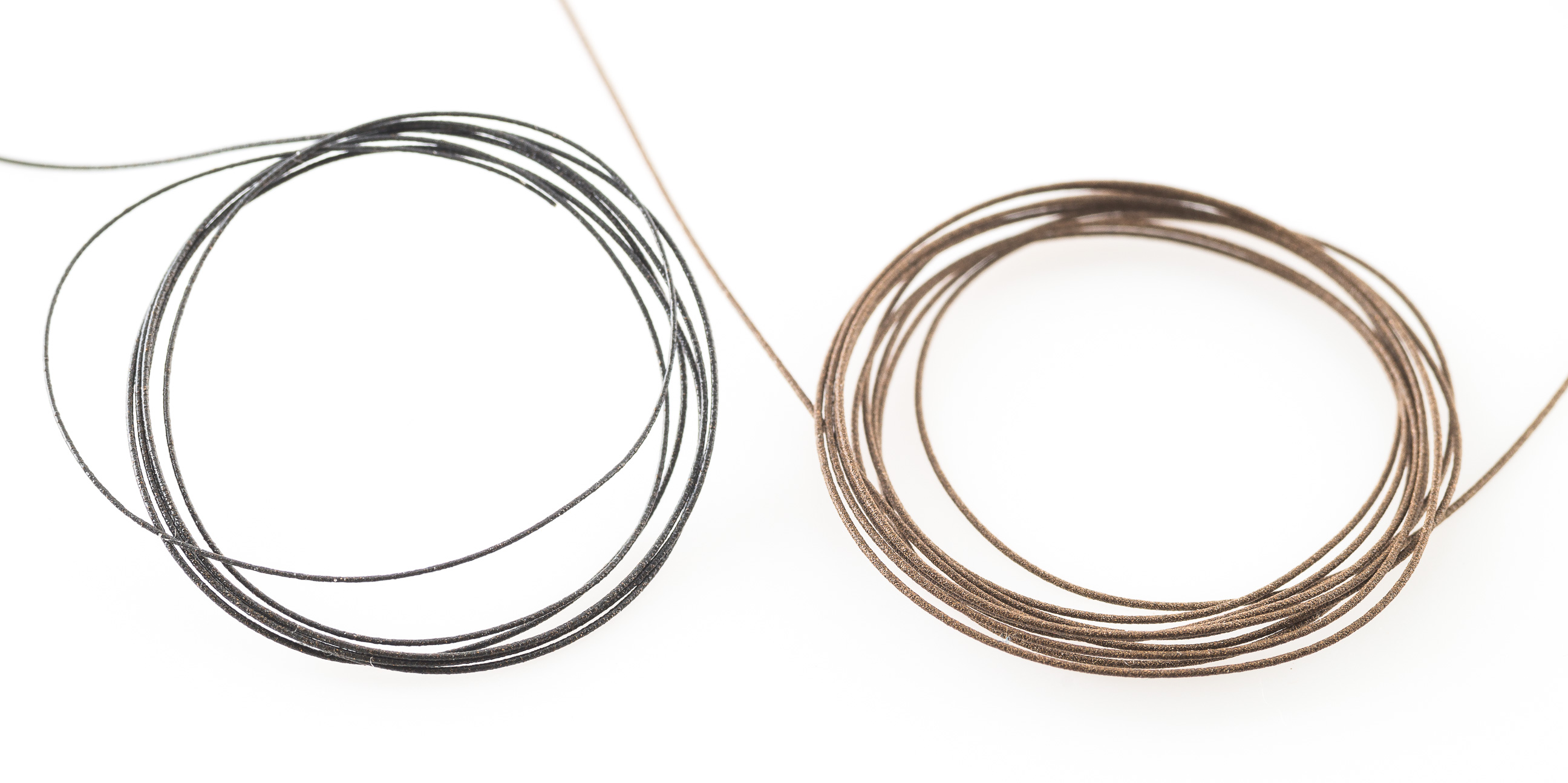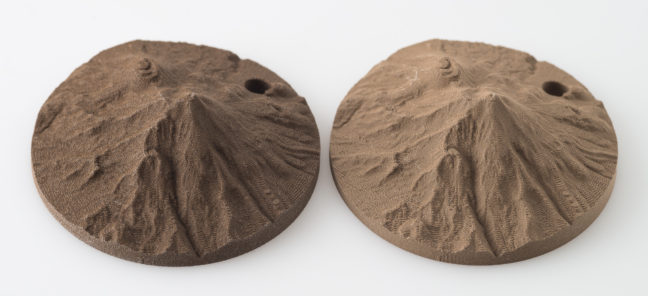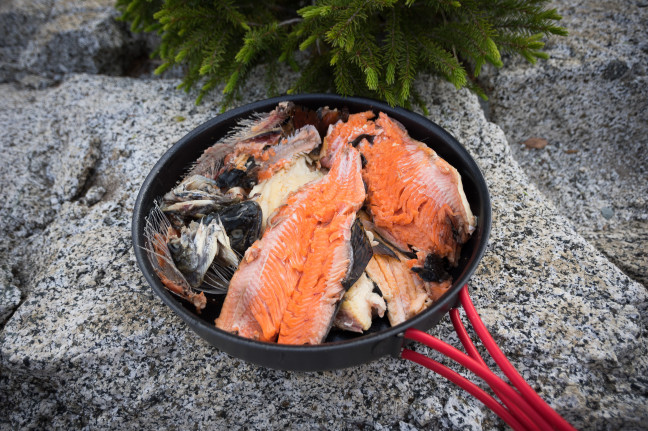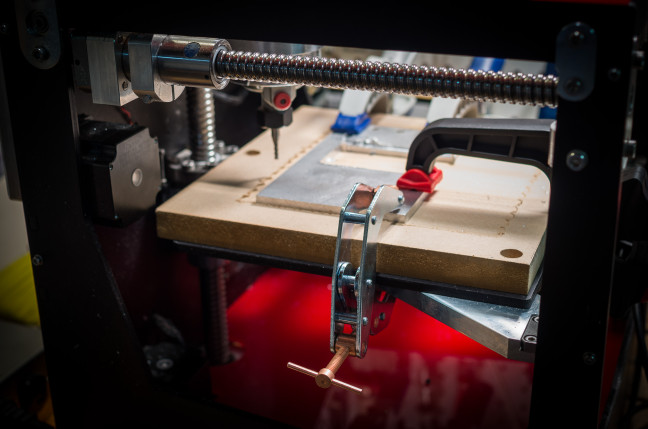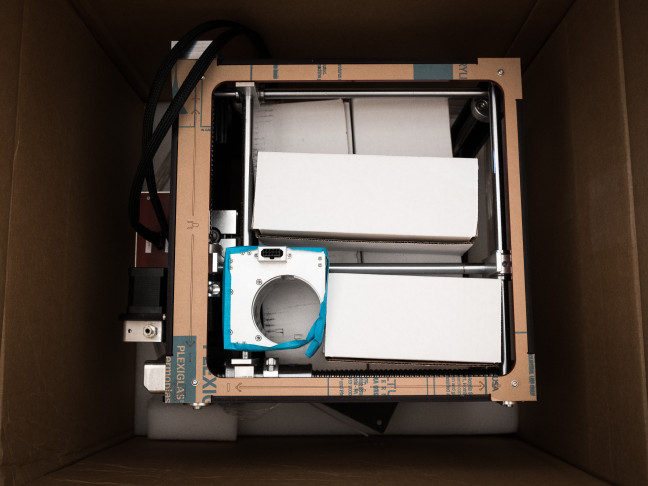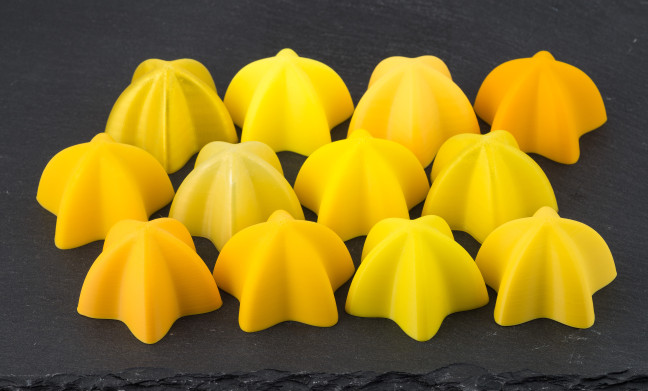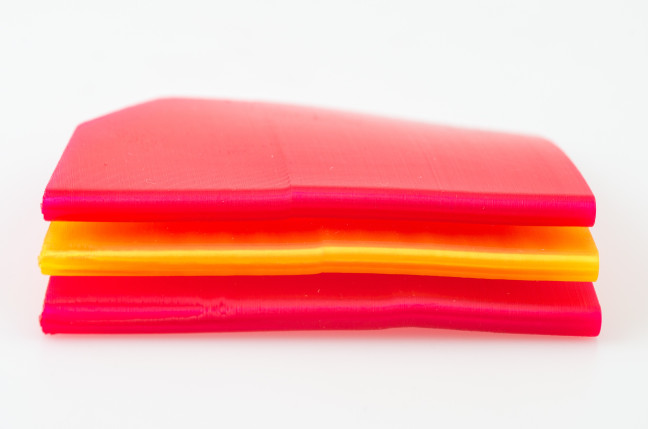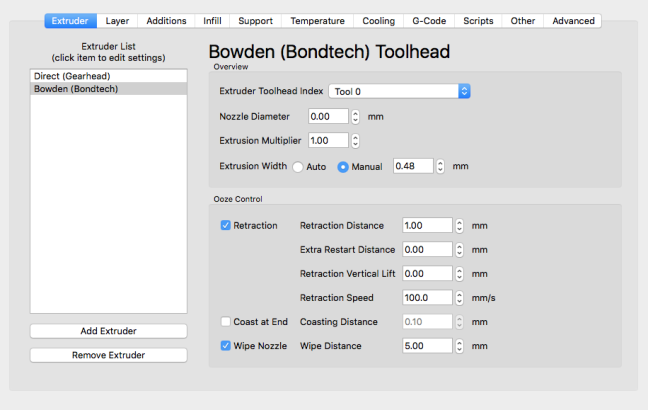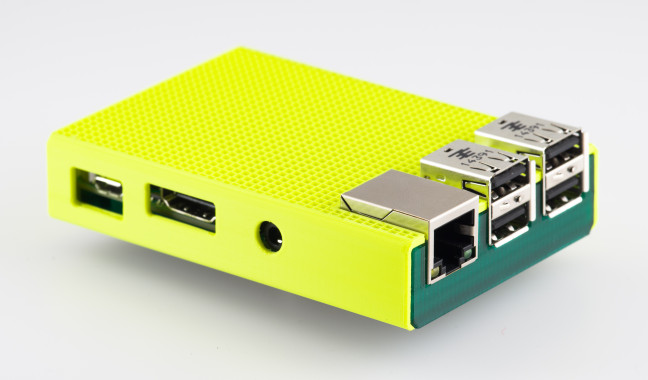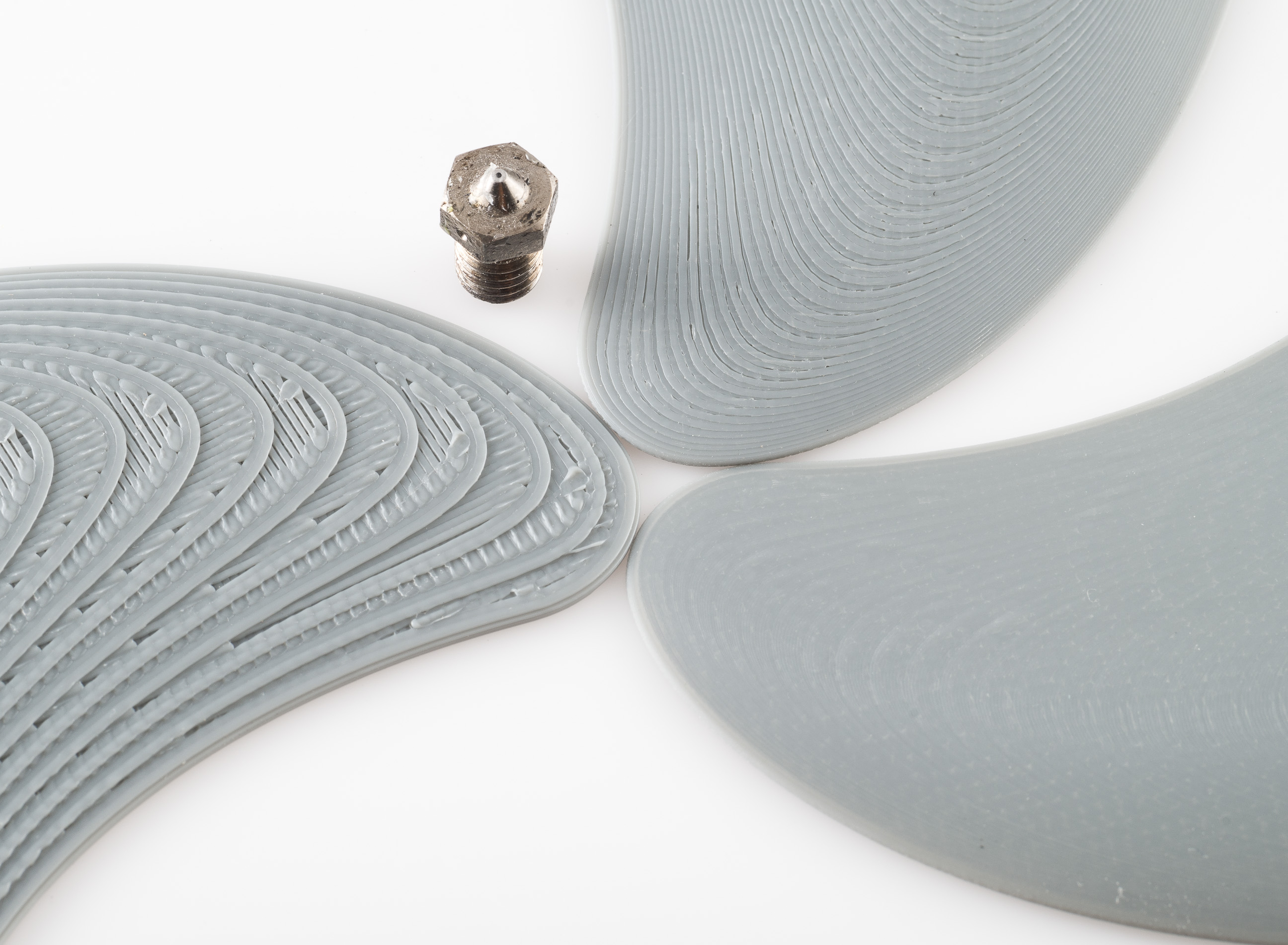 Most FFF printers support a high resolution z axis, but I rarely find the need to print with a layer height smaller than 100 microns (0.1mm). Of course, there are exceptions, and a surfboard fin is one of them. Here’s a comparison of 5 prints with layer heights from 10 to 200 microns.
Most FFF printers support a high resolution z axis, but I rarely find the need to print with a layer height smaller than 100 microns (0.1mm). Of course, there are exceptions, and a surfboard fin is one of them. Here’s a comparison of 5 prints with layer heights from 10 to 200 microns.
Metal Powder Filaments
I like metal powder infused filaments, they’re fun to use and whether unprocessed or polished, and can produce prints that look and feel very different from the normal plastics. Not all the metal filaments have these benefits though, there’s a big difference between metal powder filaments and metal colored filaments, and many filaments fall somewhere between. Metal colored filaments can produce great results and are much more affordable, but I’m mostly comparing filaments that have or claim to have actual metal in them.
Hot Smoking Fish in the Backcountry
What does my favorite way of cooking fish in the backcountry have to do with 3D printing? Not much, though some of my gear is 3D printed. Still, this way of cooking doesn’t seem as common so I though it was worth sharing and I don’t have a better place to put it. It’s very similar the method shown in this video (which is the one that inspired me to start cooking this way). So if you enjoy backpacking and fishing, here’s my favorite way to cook freshly caught fish. (I also cook fish at home the same way, so it isn’t just for backpackers).
BoXZY Unboxed
BoZXY Kickstarter arrived about 24 hours ago (backer #28), with mill and laser attachments in an approximately 20in³ box. Here’s more pictures of the contents…
Cartesian Flying Extruder
A flying extruder makes a lot of sense on a delta, where it moves much less than the hotend (shorter distances and slower speeds) but it doesn’t seem like it would translate well to a cartesian printer. I tried it anyways. I didn’t like the artifacts I was getting from a long bowden drive or direct drive on my Eustathios, and in the process of shortening the bowden tube, I ended up with a cartesian version of a flying extruder setup.
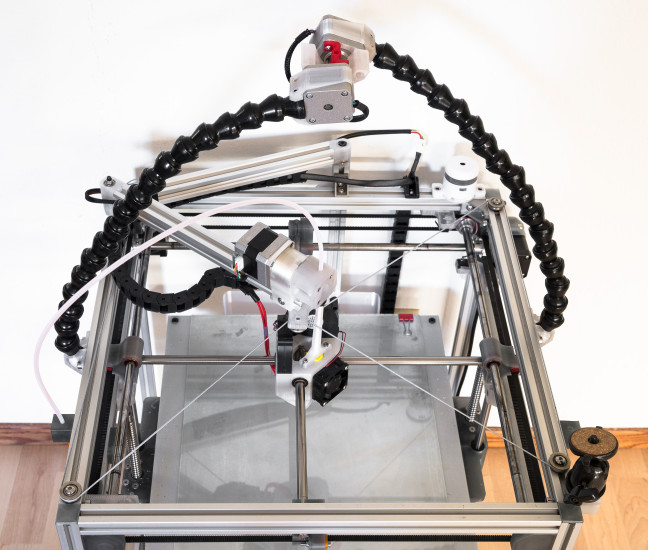
PETG Warping
I’ve had some issues with warping when printing with eSun PETG, which was surprising since I’ve never noticed any warping with PET before that. Since many people seem to be getting warp free prints with eSun PETG, I assumed it might be caused by PETG from the early production runs. So I purchased a new spool, and it does look quite a bit different (rougher texture to the filament). For a test object, I used a fin on my ski pulk as that was one of the prints I was having troubles with. The original was printed as a vase print, with a 1.5mm extrusion width. The retest was done at a 1/3rd scale, also as a vase print.
Using Firmware Retraction with Simplify3D
Why use firmware retraction? It lets you set configure retract and unretract speeds separately, and values can be adjusted mid-print. (Too much stringing? try increasing retraction distance. Nozzle marring previous layers? try increasing z-hop, Getting post-retraction bumps? try slowing the unretract speed or tweaking the restart distance). Simplify3D doesn’t provide native support firmware retraction (as of January 2016), but it does have the ability to do simple gcode post processing. This post describes how to use it to tune retraction speeds or enable firmware retraction. Even if your printer’s firmware doesn’t support firmware retraction, you can still customize the unretraction speed.
Configuring Octoprint
If you have a brand new Raspberry Pi* and want to set up Octoprint, I’d recommend starting with Thomas Sanladerer’s video, it covers everything you need to get Octoprint up and running. The rest of this covers additional configuration to Octoprint after it has been set up. The case in this picture can be found on Thingiverse.
